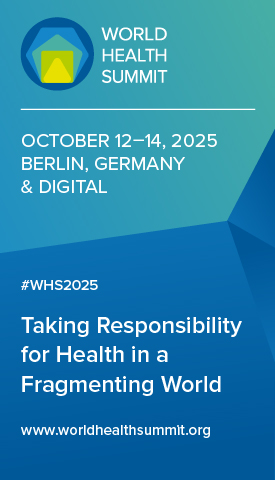The view from Sri Lanka
Long-term political commitment has driven continuous investment in Sri Lanka’s public health services – a strategy that has been extremely valuable in the face of COVID-19
When the World Health Organization announced on 9 July 2019 that Sri Lanka had eliminated measles, a notifiable disease, the island nation had already attained an impressive track record in affording comprehensive health services to
its citizens.
Since its independence in 1948, Sri Lanka has achieved remarkable levels of success in human development, in spite of a low level of per capita income. Its impressive health indicators include a maternal mortality rate of 33.8 per 100,000 live births, an infant mortality rate of 9 per 1,000 live births and life expectancy at birth of 75.3 years. The country has a strong surveillance system, and all vaccine-preventable diseases are an integral part of the communicable disease surveillance system. As a result of these achievements, for more than 30 years Sri Lanka has been recognised as a strong performer in global health.
This achievement is due to the consistent investment made in the health sector by respective governments. State health expenditure has generally been around 1.5% of gross domestic product. It has fluctuated from 1.97% in 2006 to 1.48% in 2017 with a low of 1.13% in 2013. In spite of the limited percentages, the country has a countrywide, comprehensive network of health centres, hospitals and other medical institutions, with a large workforce engaged in curative and public health activities. Support is available at the household level through an extensive network of health workers. Health services in the public sector are delivered mainly free to patients. Supervision and management of all healthcare institutions, other than teaching hospitals and field services, are decentralised to regional councils.
Dr R Surenthirakumaran, head of the Department of Community and Family Medicine at the University of Jaffna, has said that “this development of health services was only made possible due to the public health structure laid down in the early part of the 20th century. The National Institute of Health Sciences Kalutara, the pioneer public health education institute in the country, was developed in 1926 to train the public health staff in the country.”
Early investment
This early investment reflects the will and commitment of the political establishment of the colonial era to support healthcare needs. This concern eventually led to the development of a public health programme that reaches almost all the families in the country through the 325 administrative units called medical offices of health areas.
Sri Lanka has developed a community-based surveillance system to control communicable diseases. The Epidemiology Unit of the National Ministry of Health was developed to handle the communicable diseases and vaccination programmes in the country. Sri Lanka’s public health system is one of the standard health systems in the world and is especially geared to handle public health emergencies.
Quarantine law in Sri Lanka is primarily governed under the Quarantine and Prevention of Diseases Ordinance No. 03 of 1897. The ordinance, which is composed of 12 sections, was introduced to prevent the introduction of all contagious or infectious diseases and the spread of such diseases in and outside Sri Lanka. It has been expanded by the Ministry of Health and Indigenous Medicine to deal with the current pandemic situation, an amendment enacted through the Extraordinary Gazette No. 2167/18(20.03.2020) that lists COVID-19 as a quarantinable disease.
The continuous investment in public health structures, a result of long-term political commitment, has been valuable in the face of the COVID-19 crisis. Dr Gamini Jayakody, a physician in Kandy District in the Central Province of Sri Lanka, remarks that “the already well-established community health network, going down to grassroots level, supports tracing and follow-up of COVID-19 patients and early identification of possible clusters”.
Investment in education and the resulting high literacy, including 90.8% female literacy, are also factors supporting the health sector, as it enables citizen voters to recognise and demand services from political entities. Strong, consistent and committed political leadership and an educated citizenry are necessary for the development of healthcare systems, and Sri Lanka is a case in point for such investments.












